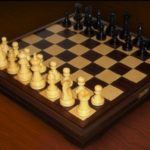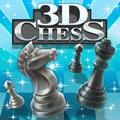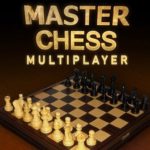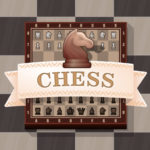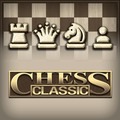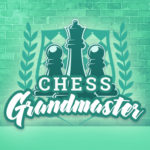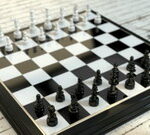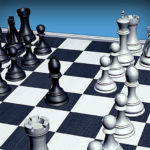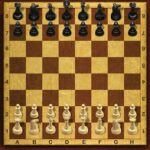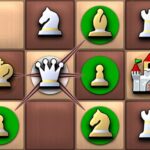The game of chess, or chess, is a board game between two players on either side of an apron called a chess board composed of sixty-four squares, 32 light and 32 dark called the white squares and the black squares. . The players take turns moving one of their sixteen pieces (or two pieces in case of castling), light for the white camp, dark for the black camp. Each player initially has a king, a queen, two towers, two bishops, two knights and eight pawns. The object of the game is to checkmate one’s opponent, a situation in which a player’s king is engaged and cannot be remedied.
Strategy
The most basic step in evaluating a position is to count the material for each side. Experience allows each type of piece to be assigned a certain number of points, 1 point for each pawn, 3 points for a knight or a bishop, 5 points for a rook and 9 points for the queen. Knights are worth a little more than bishops in closed (crowded) positions typically at the start of the game and conversely bishops are worth more than knights in open positions or at the end of the game. On the other hand, two tricks (10 points) are generally worth more than one queen (9 points). This count is a good illustration of the relative value of coins, but experienced players don’t need to indulge in it, they know where they stand at all times. For a precise evaluation, positional considerations are taken into account, for example advanced pawns are an asset or conversely a weakness if they are difficult to support, a pair of bishops (against bishop + knight) is appreciated for its ease of control. both the white squares and the black squares of the chessboard.
Another important factor in evaluating position is taking into account the pawn structure, also known as the pawn skeleton, or the asymmetrical distribution of pawns on each wing of the board. The pawns are not very mobile and their configuration largely determines the strategy of the game. The weaknesses created in their structure (isolated pawns, doubled, backward, holes in the pawn chain) are often permanent, so they must be carefully avoided or compensated, for example by possibilities of attack.
The diagram opposite, taken from a Siegbert Tarrasch – Max Euwe game from 1922, shows how difficult it can be to assess certain positions. Indeed, the intuition of many players is faulted here: the black bishop is blocked by his own pawn in e5 and white can exploit the hole in d6, however experience shows that white weakness in d4 is even more serious. : the theory considers that blacks have better prospects.
Tactical
Tactics are usually very short term actions, to the point that they can be completely calculated by the player. The depth of the calculation, that is, the number of moves of the longest variant, depends on the player’s abilities, or the power of the computer if applicable. In quiet positions, with many alternatives on either side, there is little chance that a deep calculation will be possible, while in positions with a limited number of forced strokes the stronger players are at a loss. even to calculate very long sequences of strokes.
Forced suites of one or two hits, threats, exchange of coins, double attacks, etc. can be chained in combinations: sequences of maneuvers often forced for one or the other of the two camps. Theorists have described a large number of elementary methods and characteristic maneuvers such as nailing, fork, stringing, drums, discovery attack and in particular discovery failure, intermediate blow (or zwischenzug ), deflection, luring, sacrifice, mining, overloading, interception.

